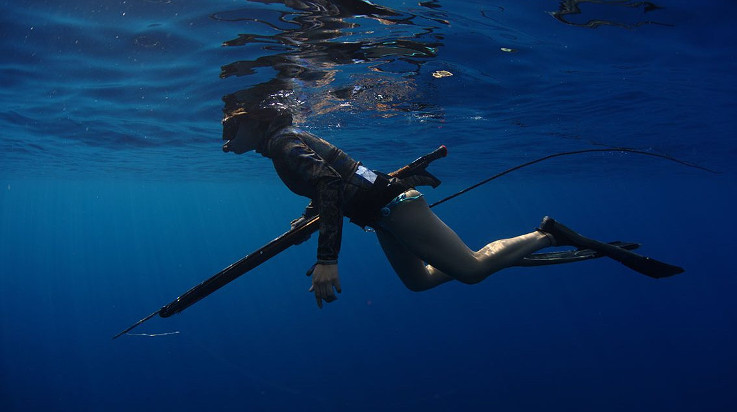Small details, huge impact
This study focuses on performance optimization for underwater fishing equipment, specifically the spear tip of a fishing shooting rifle. The goal is to increase spear velocity, range, and shooting power without affecting the rifle itself.
When objects move at relatively high speeds through dense fluids like water, even minor geometric details can have a significant impact. Using highly accurate simulation software, we can replicate the physical behavior and identify shape modifications that improve performance.
PhyMo enables exactly this by virtually reproducing real-world conditions to reveal suboptimal design choices and allowing users to test shape changes without manufacturing physical prototypes.
As shown by the results below, even a small shape tweak can lead to meaningful gains, here, the best tested design saves 6.17 Watts of power thanks to reduced drag force.

![Different tip geometries under test: [top-left] standard conical tip; [all others] modified versions](/img/projects/spear/CFDSimulation_marineEquipment_turbulence_drag_shapeOptimization_3dmodel.jpg)
The idea under test and its variants
The standard spear tip shape is conical (see image on the right). To improve water penetration, field tests used a modified tip featuring cutting edges created by removing three circular sections spaced 120° apart. The removal angles and diameters are key parameters defining each modification.
Three different modified tip shapes were tested alongside the standard conical tip. The main objective was to compare the four designs regarding drag force to determine which offered the best efficiency (lowest drag).
Optimizing spear shape to minimize drag improves shooting power, velocity, and range without requiring changes to the rifle itself.
Quantitative results using virtual simulations
Drag estimation is a common Computational Fluid Dynamics (CFD) application, and PhyMo includes dedicated modules for this task. Each model is imported, meshed, and simulated using a RANS turbulence solver with appropriate boundary conditions.
Post-processing extracts field variables like velocity and pressure, which are used to calculate performance metrics such as drag force.
These results are fully virtual, no physical prototypes or lab tests are needed, enabling low-cost, extensive exploration of design alternatives.
The figure on the right summarizes the study results. The bar chart clearly shows all three modified geometries outperform the standard tip in drag reduction. Pressure distribution images highlight how the standard tip’s less penetrating shape generates high-pressure zones that increase drag.
A tool to boost efficiency optimization
This study focuses on one detail of spear design, the tip shape. However, other elements such as fish retention mechanisms, string clamps, and sharp edges also significantly affect hydrodynamic performance.
Using accurate, state-of-the-art physical modeling software like PhyMo, every component can be optimized for better overall design.
Over recent years, these advanced technologies, once limited to Aerospace and Automotive, have become broadly accessible. With the right software and expert support, any company or professional can leverage these powerful tools.


![Results: [top-left] pressure distribution on tip surface; [bottom-left] pressure field around the tip (red=high, blue=low); [right] drag force comparison of tested geometries](/img/projects/spear/CFDSimulation_marineEquipment_turbulence_drag_shapeOptimization_results.jpg)
![Analysis summary published in "Pescasub & Apnea" magazine [Italian only]](/img/projects/spear/CFDSimulation_marineEquipment_turbulence_drag_shapeOptimization_article.jpg)